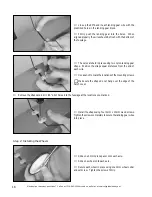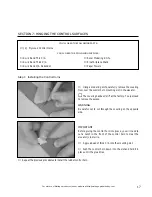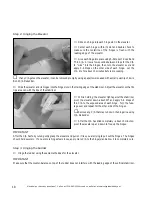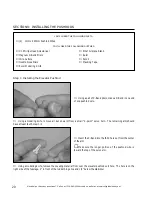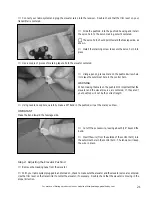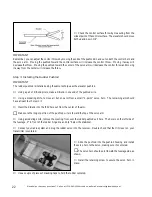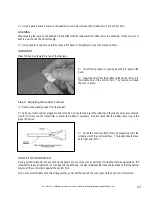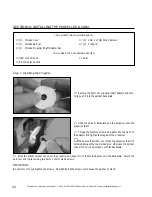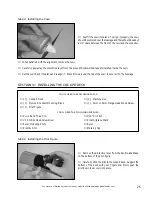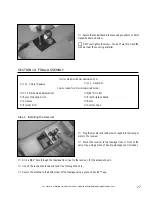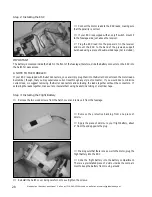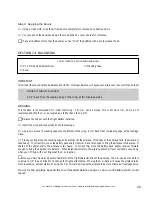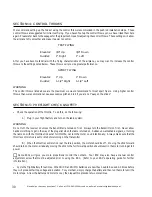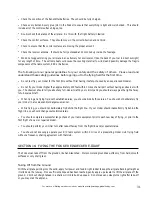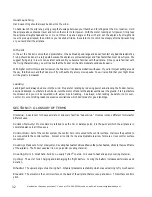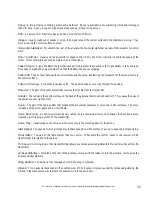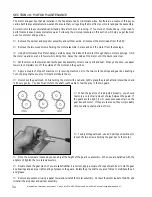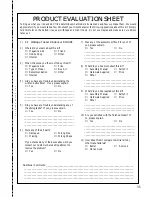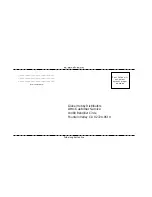
30
Need help or have any questions? Call us at 1-714-963-0329 or send us an Email at [email protected]
SECTION 14: CONTROL THROWS
We recommend setting up the Fokker using the control throws recommended in the pushrod installation steps. Those
control throws are suggested for initial test flying. If you haven't set up the control throws yet, we have listed them here
again. Please refer back to those pages for the proper technique for adjusting the control throws. These settings will allow
the airplane to fly smoother and make it easier to control.
TEST FLYING
Elevator:
3/4" Up
3/4" Down
Rudder:
1" Right
1" Left
After you have become familiar with the flying characteristics of the airplane, you may want to increase the control
throws to the settings listed below. These throws will provide greater performance.
WARNING
The control throws listed above are the maximum we would recommend for most sport flyers. Using higher control
throws than we recommend can cause excessive pitch and roll if you are not "easy on the sticks."
SPORT FLYING
Elevator:
1" Up
1" Down
Rudder:
1-1/2" Right
1-1/2" Left
SECTION 15: PREFLIGHT CHECK & SAFETY
●
Check the operation of the throttle. To do this, do the following:
A) Plug in your flight battery and turn on the radio system.
WARNING
Do not turn the receiver on unless the transmitter is turned on first. Always turn the transmitter on first. Never allow
hands or clothing to get in the way of the propeller when the radio is turned on. Sudden unwanted radio signals, or turning
the radio on with the throttle stick set at full throttle, can turn the motor on unintentionally. Always make sure that the
throttle control stick is set to idle before turning on the transmitter.
B) When the throttle control stick is at the idle position, the motor should be off. Moving the stick forward
should turn on the motor. Gradually moving the stick to the full forward position should result in the motor running at full
power.
☛
Some ESCs will give you more proportional control than others. Your ESC may also have a manual control
adjustment screw that must be adjusted prior to using the ESC. (Refer to your ESC's operating guide for further
information.)
●
Cycle the flight battery three times. When NiCD and NiMH batteries are new they need to be used 2-3 times before
they will produce their top voltage and duration. To cycle them, simply charge the battery and then run the motor until the
motor stops. Allow the battery and motor to cool, then repeat this procedure two more times.

